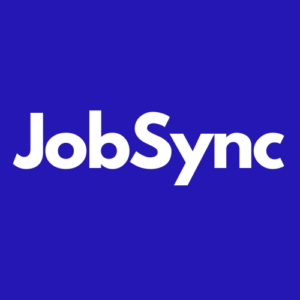
Hiring organizations want to adopt an organic-first strategy, but they’ve been gaslit into believing it’s just not possible. Let’s set the record straight.
At JobSync, we make a simple claim: your inbound recruiting strategy starts with an organic-first candidate acquisition strategy.
The main objection we get is typically, “but organic candidate traffic is dead.”
Guess what? You’ve been fed a lie. Organic candidate traffic is free traffic, it’s quality traffic, and there’s lots of it available. An organic-first candidate acquisition strategy has the potential to be a gift that keeps on giving—but only for those who know how to leverage it.
Is organic candidate traffic dead?
There are a few reasons why people might think that organic candidate traffic is dead depending on the job board. Google for Jobs shows more results for prominent job boards and less for company websites, for example. Indeed and ZipRecruiter are sending very little free organic traffic to anyone with a company site application and the smaller job boards just have enough candidate traffic to matter.
But is this true or is it simply that you aren’t getting very much traffic through organic means?
Is there still organic candidate traffic to be had?
Yes, there is. To show you what’s possible, let’s do the math. First, consider these statistics using the latest available data from January and February 2024:
-
Unemployment rate: 3.9% or 6.5 million people
-
Quits: 3.4 million
-
Number of open jobs: 8.9 million
-
Number of hires: 5.7 million
-
Average number of applications submitted to get a job: 30-120.
That last number is uncited. There are a hundred mentions that trace back to nothing official, so it’s hard to nail down. However, anecdotal evidence from job seekers is fairly consistent—many report applying to anywhere between 30 to 120 positions in their quest to land a job. We will use the low number for purposes of this post.
Digging into these numbers, you can see that there are 8.9 million jobs and 9.9 million candidates (unemployment plus quits).
If every one of those 9.9 million people applies to 30 jobs, that is 297 million applications. (And let’s be honest, it’s a lot higher.)
And if every one of those 297 million applications was paid for at the current average Cost Per Application of $19.187 (Appcast’s benchmark data) with an average of 118 applications coming in per job …. well, let’s just say no one has that budget and a lot more of us would start job boards.
For job boards, organic equals candidate experience
Since no budget is ever going to be big enough to cover all those applications, companies do what companies have always done and put budgets where they can. That’s usually on the highest priority or hard-to-fill roles. The rest of the jobs are uncovered.
In the earlier days of online job boards, you had to pay to post. This meant that job seekers only saw those opportunities for which companies were willing to pay. Indeed changed all that by aggregating all jobs from everywhere in one place. Suddenly, candidates could see not only paid opportunities but all opportunities, from careers sites, staffing firms, other job boards and elsewhere.
From a job board’s perspective, the candidate is their product. Ensuring the “best” experience for candidates—by matching them with the best available suitable jobs—is critical to the job board’s success. Allowing unpaid jobs to make it in front of the job seeker works in this broader context. It means that candidates are happy, because they’re being served with job opportunities that match their search criteria, and employers are happy because they’re getting broader visibility for all their vacancies, not just the ones they can afford to promote.
Put all this together and you’ll see there’s plenty of opportunity for organic traffic to be had. In fact, it’s possible to fill between 50 and 90 percent of your jobs organically.
This means that candidates find, apply and are hired for at least half your jobs without any media investment—which sounds like a pretty sweet deal.
Is organic candidate traffic as good as paid?
By now, you might be convinced that organic candidate traffic is ripe for the picking. But you might have another objection—surely the quality of candidates coming from organic doesn’t stack up against the quality generated from paid campaigns?
Put simply, yes it does. Here’s why.
The desire and willingness to provide organic applicants is very low. Everyone—media, agencies, job boards and technology—profit from an employer’s failure to turn clicks into applicants. If you don’t have enough applicants for your jobs, then the only option is to spend more. The market is not incentivized to help employers reach hiring goals with fewer dollars.
Ironically, this attitude can work in an employer’s favor. Since paid matches are prioritized, the job board will only dip into its organic reserves when there aren’t enough paid matches coming up in the search results. Then, the job board will surface the unpaid jobs that match the query and thus increase their chances of getting a hire.
If it can’t be paid, then getting a win on the hires report is still a win!
What makes this even better for employers is the aperture of the search. When it’s a free job, the job board closes the aperture making the match as tight as possible: location first, title match next, and then the chance of getting a completed application. As you add money to the mix, the aperture opens. The location expands, the title match rate is relaxed. You want this on hard-to-fill roles where candidates are scarce to widen the candidate pool.
What does this mean? Well, if a candidate is seeing your free job, especially on the first page, it means your job is a really great match for them. It might even be a better match than the paid jobs. That candidate is more likely to be interested in your job and the chance of you getting a completed application is better than average. And if they are physically close to the job location and the title match is strong, you may have just increased your retention rate!
What is the search aperture and why does it matter?
When a search is entered into a search bar, a lot of algorithms fire to determine what should be returned and in what order. The job’s location (5 miles, 10 miles, 30 miles, 50 miles from the job seeker) can have orders of magnitude differences in terms of the number of matches. With job titles, the algorithms will prefer exact matches, use matched synonyms, and also match to key words in the job description. Even smarter, if the search isn’t going to return many results on a tight aperture, the algorithms automatically open it up a layer to get more.
Should I pay for candidate traffic at all?
In short, yes, you should have a paid strategy. In fact, this becomes far more surgical when coupled with an organic strategy, and results in the best of both worlds.
Most employers’ budgets are lower than their needs. Without an organic-first strategy, employers end up spending a little bit in a lot of places. The easier-to-match jobs end up consuming all the budget, and the really hard-to-fill jobs consume budget without results. This is how many employers end up spending 20% of the salary on search firms and sourcing activities.
By right-sizing the spend distribution and putting enough budget to be impactful on the hard-to-fill positions, employers can both maximize organic while getting applicants and hires for the hard positions.
Organic is not dead!
Don’t be fooled by naysayers—the potential for organic candidate traffic is still very much alive and well. It might even be a higher quality than the paid traffic you’re used to. Anyone who’s trying to squeeze value from their recruitment budgets should at least try to raise their organic traffic, because to not do so is leaving money on the table.
In our next post, we dive deeper into the “how to do it” of raising organic candidate traffic. Stay tuned for some best practices to get those candidate numbers up—one organic candidate at a time.


